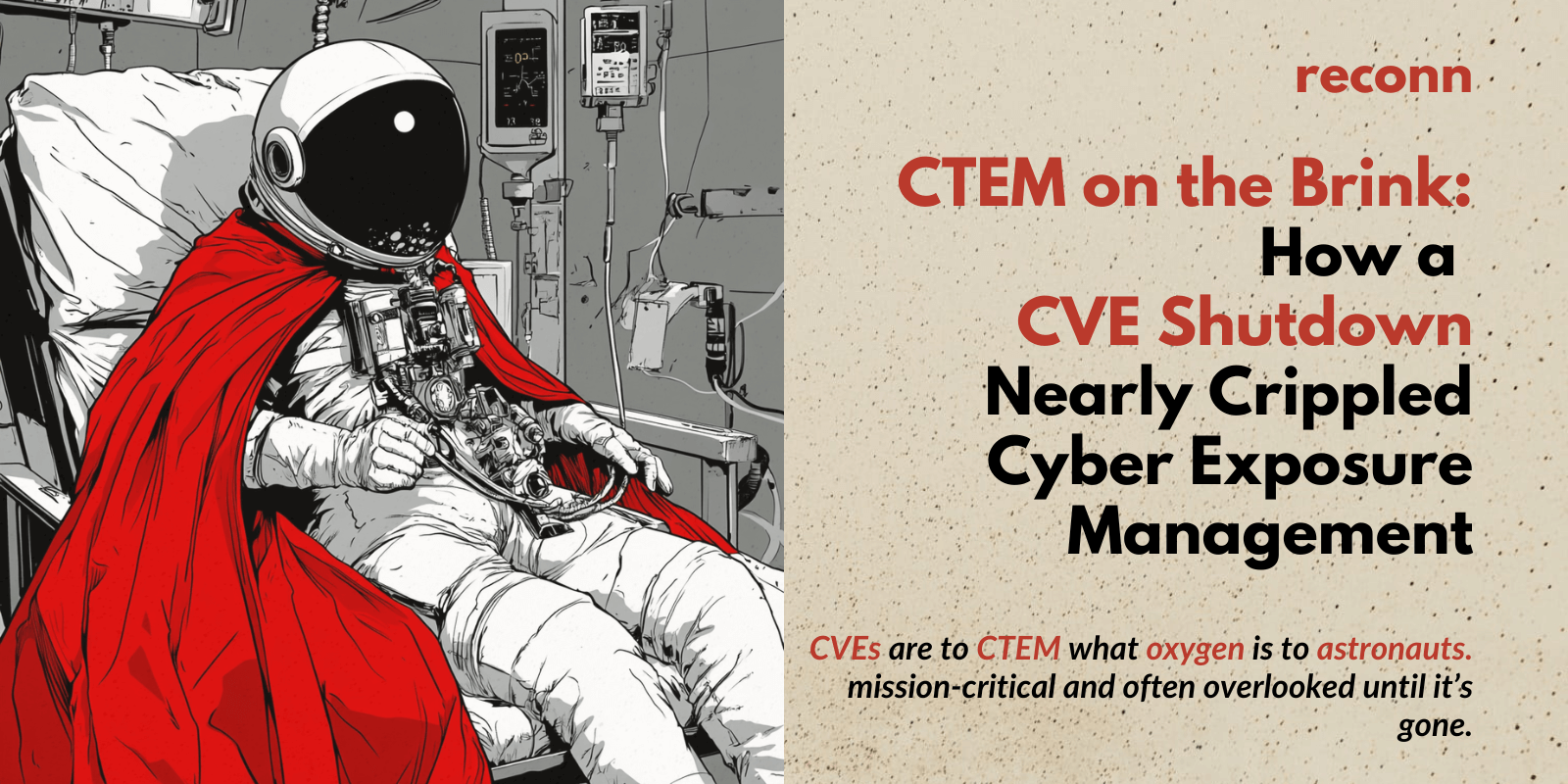CTEM's Invisible Backbone: The Role of CVEs
Deep in the depths of CTEM, VAPT, red teaming and threat intelligence—where I worked intimately with enterprise customer, I saw firsthand the vulnerability of our digital landscape. But nothing made this truth more crystal clear than the April 2025 events, when the CVE Program, managed by MITRE, came close to being shut down.
In reality, the underlying infrastructure that makes vulnerability prioritization possible, as well as exploitation chaining, was about to be shut down—within minutes, mind you—because of funding constraints.
Let that sink in: the internet almost lost its global vulnerability index.
Table of Contents
Importance of CVEs to CTEM Practitioners
In cybersecurity, it’s well known that CVE IDs are the lifeblood of CTEM. Whether validating a new threat vector, mapping an exploit path, or deciding which vulnerabilities to prioritize for patching, it’s these CVEs that make the workflow possible. Much more than simple identifiers, they are conveyors of context. They give us a structured vocabulary for our exposure management programs and create a timeline for triaging what is most important.
The April Scare: When the System Nearly Went Dark
Since 1999, the unseen force that had driven this system in the background had been MITRE. In the first week of April, they revealed a shocking surprise, though: their deal with the U.S. government expired on April 16, and nobody had negotiated a renewal.
The cyber community remained in suspense for days. Would the CVE database return? Would researchers be stuck unable to assign new IDs? Should the red teams be reduced to inventing their own nomenclature? The ridiculousness of the situation was almost laughable—and only because the urgency of the situation felt so palpable.
The ultimate rescue and the institution that followed.
Thankfully, CISA pulled an eleventh-hour move and extended MITRE’s contract by 11 months. That gave the world a bit of breathing room. But it didn’t solve the root issue: a globally critical system was on the verge of collapse because of a funding gap.
That point lit a fuse. Members of the CVE Board, open–source community leaders, and information security veterans came together to form the CVE Foundation—a non-profit initiative to make sure that such a cliff is never reached again. This is an important move towards sustainability and community custodianship, and, frankly, it is long overdue.
What the crisis really taught us.
The crisis revealed a few hard realities to all of us:
CTEM strategies are only as good as the data that underpin them. There is no exposure visibility without CVEs.
Infrastructure rarely stays hidden for a long time. It is our responsibility to maintain and build the underlying structures that provide security.
Dependent solely on one government, one organization, or even a single budget line alone to fund an international asset is just impractical.
Regional Perspective: The Deep Resonance of This Message Within Us
As I build CTEM-first solutions across the Middle East and Africa, I see the dependence on these critical systems every day. We use CVEs to inform our RBVM playbooks, to educate CISOs, and to stitch together signals from telemetry. If that were gone, we‘d lose much more than a number; we‘d lose our clarity.
Conclusion: Inner Strength through Self-Sufficiency
So yes, the crisis was averted. But let’s not wait until another budget expiry notice threatens our collective threat visibility. Let’s support the CVE Foundation, rethink how we fund these backbones, and ensure the future of CTEM isn’t built on hope—but on resilience. CVE’s are not just a top priority when protecting the cyber perimeter, but an absolute necessity.

Stay Ahead or Stay Hacked: The CTEM Advantage
Cyber threats don’t wait, so why should you? reconn’s Continuous Threat Exposure Management (CTEM) keeps you ahead with:
EASM – Find what’s exposed before attackers do.
RBVM – Fix what actually matters, not just what’s loud.
ASPM – Secure apps at every stage, not just before release.
CSPM – Cloud misconfigs? Not on our watch.
PTaaS – Real-world attack simulations, on demand.


